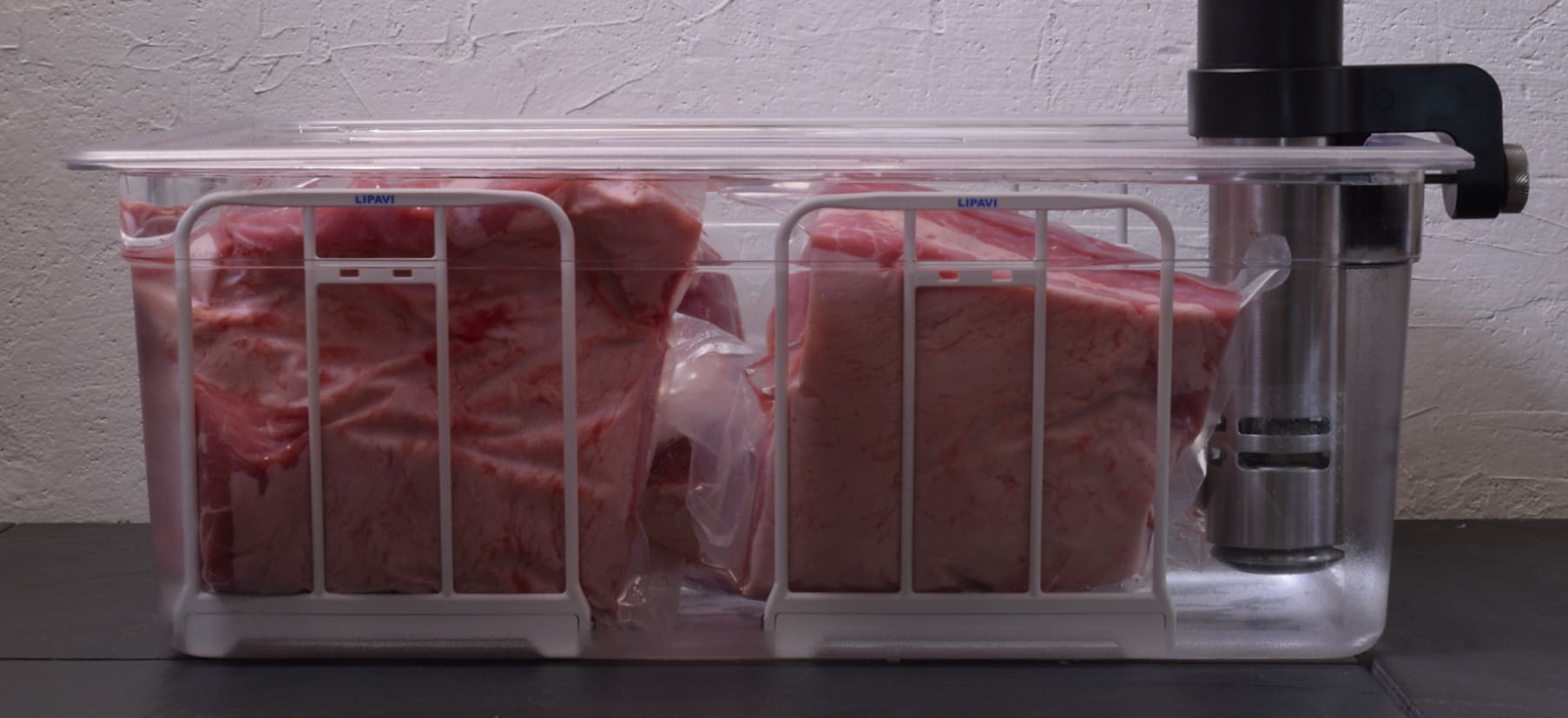Serves 4+
Level of difficulty 3.0
Above: Lipavi C20 container, N20 polycarbonate racks. Lipavi C20L lid.
Procedure:
Seal the cured beef in heat rated vacuum bags. Process fully submerged at 135 F/57 C for 72 hours.
After the intervals has elapsed, drain or siphon out the hot water and replace it with iced tap water. If the temperature of the water is higher than 70 F/21 C after fifteen minutes, repeat the siphoning/refilling process. Once the water temperature stays at 70 F/21 C, siphon the water out again. The roast can then be lifted out in the rack, drained and staged into the refrigerator. Once it is refrigerated to 40 F/4 C, we can proceed to the next step!
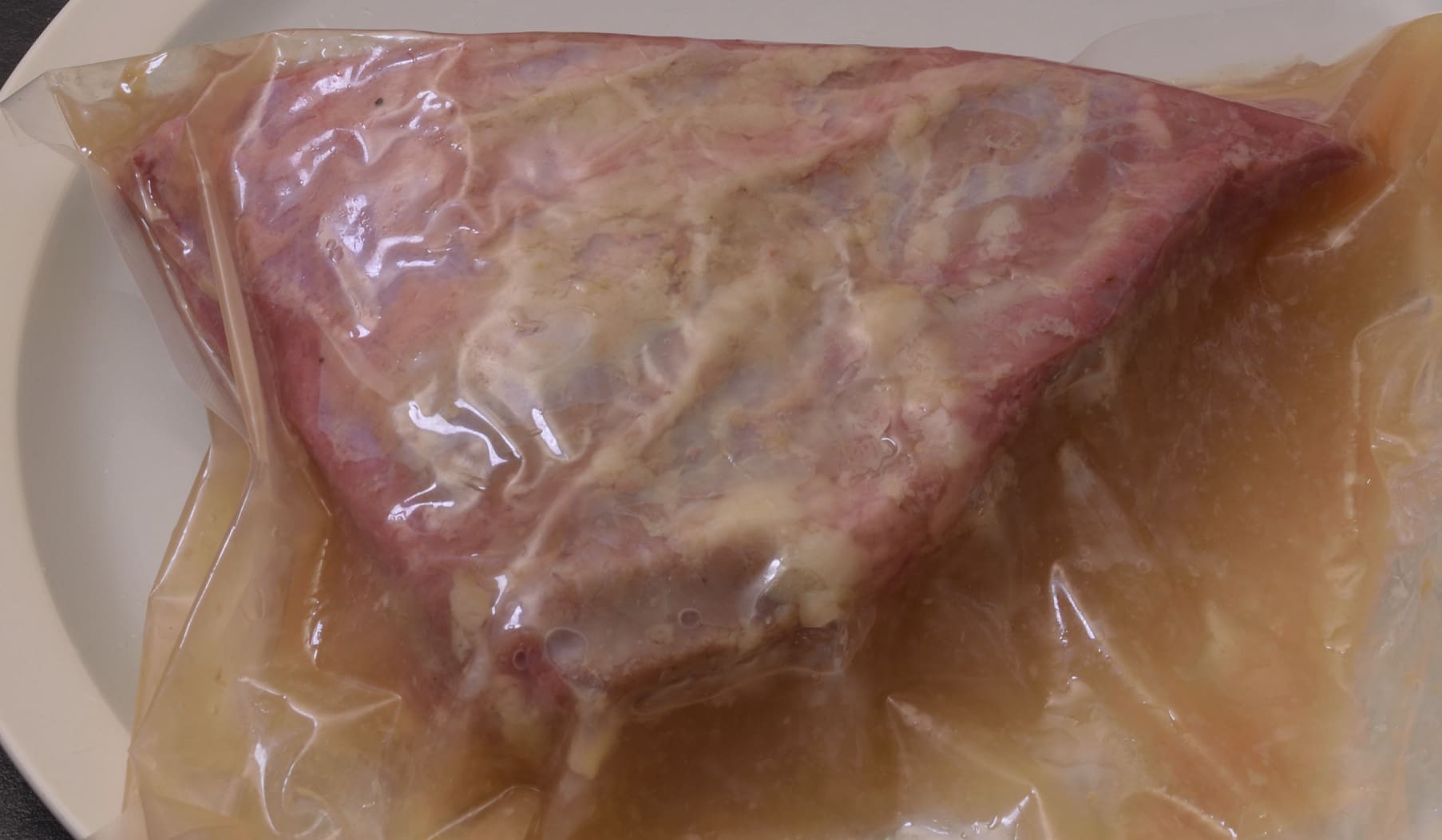
Remove the corned beef from the packaging and harvest the juices. Pat the surface dry with a paper towel.
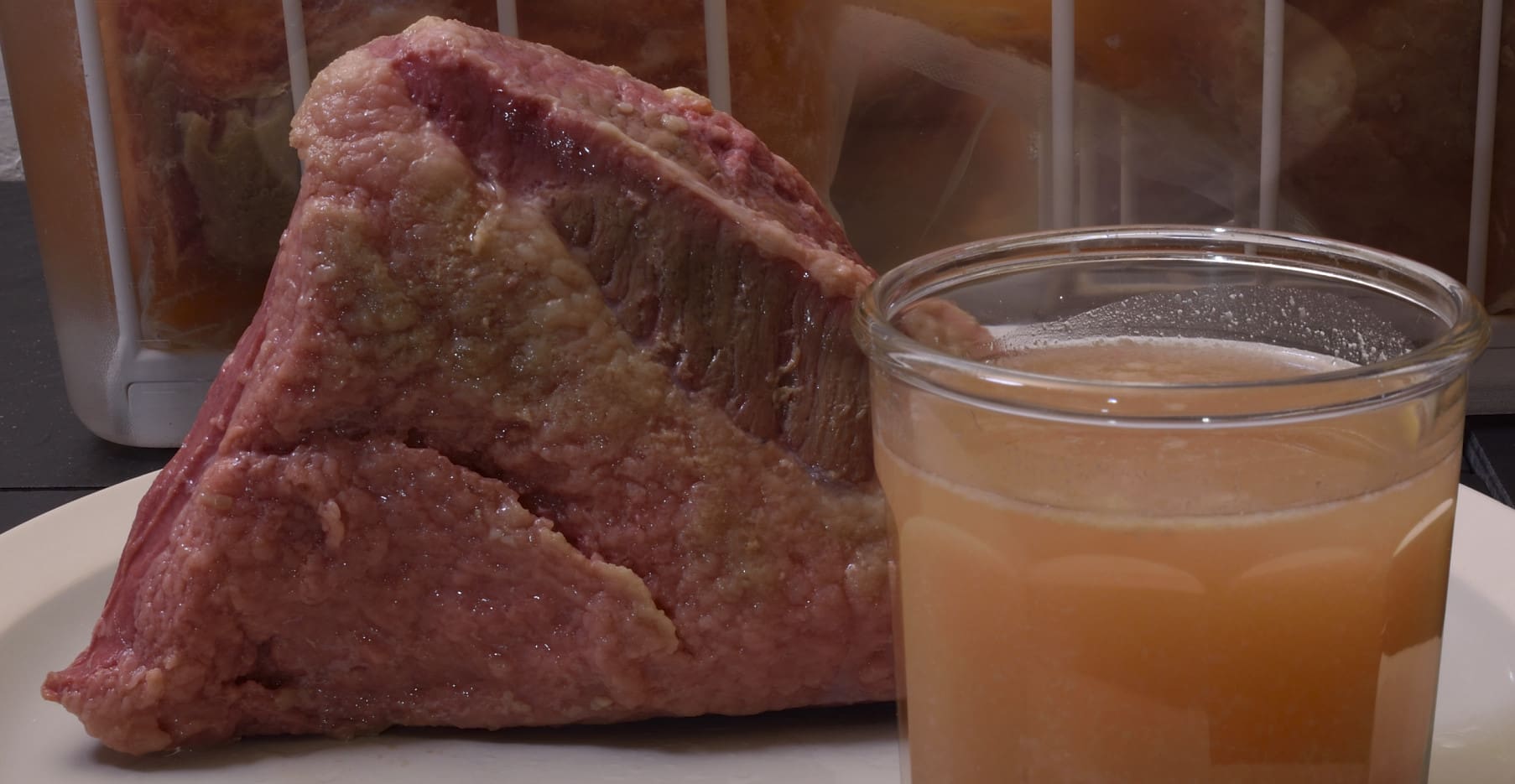
Use gloved hands to spread the egg white solution on the meat. The albumen protein in the egg white causes the seasoning to stick to the surface of the meat. Sprinkle and rub well with the pastrami seasoning.

Spray with PAM or drizzle with a few drops of oil to facilitate the development of the crust.
Smoke the coated brisket at 180 F/82 C for 4 hours. Use a probe thermometer to make sure the meat achieves an internal temperature of 125++ F/52 C++. At this temperature, it will develop a moderately dark, dry crust.
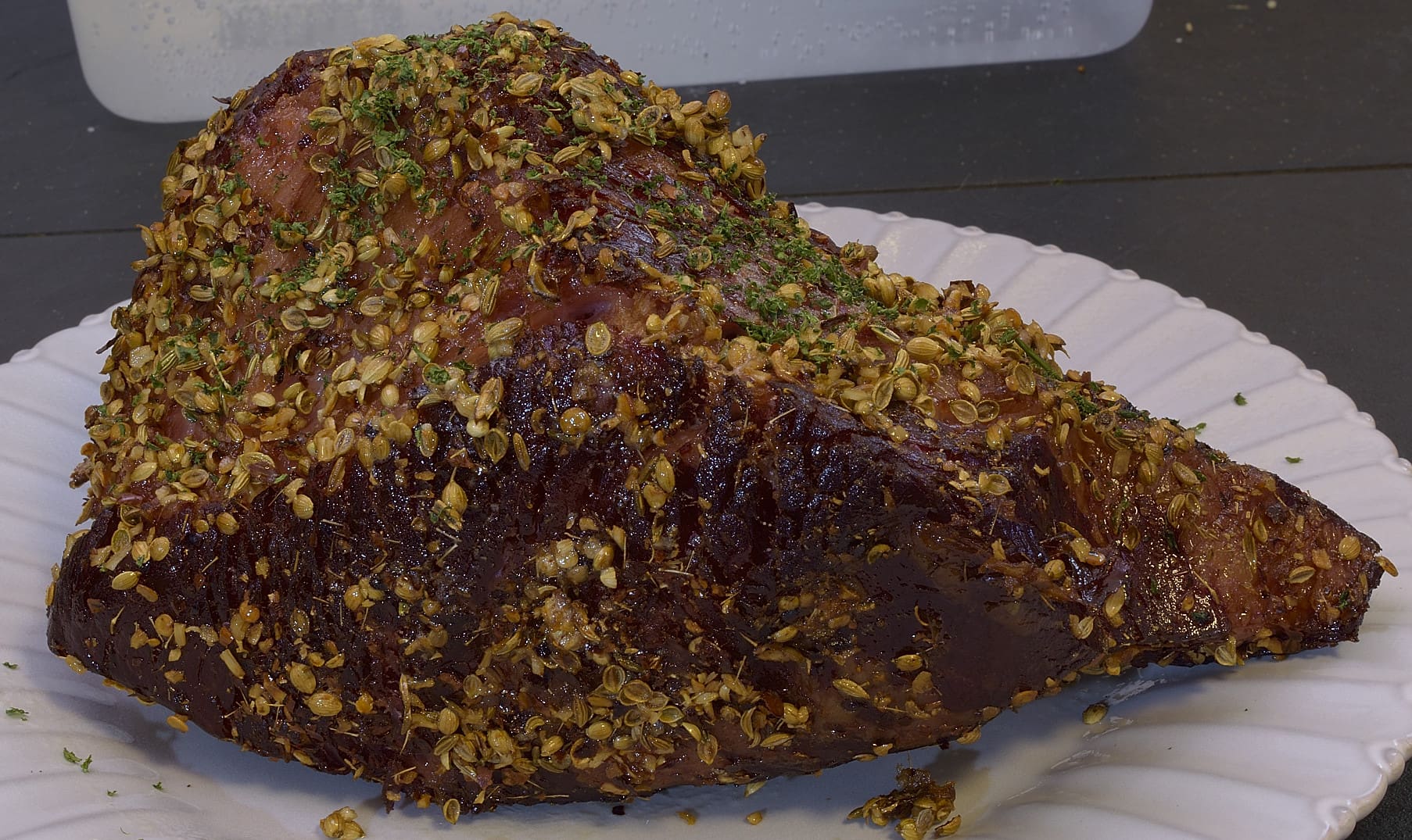
Remove the roast from the smoker. The roast can be carved now and served if desired. Otherwise, put in a vacuum bag or a Ziploc gallon freezer bag. Immerse the bag in cold water to remove excess air, seal and shock the roast down to 70 F/21 C just like you would if it was coming out of the bath. This safety precaution can and should be applied to any cooked protein above 2 lb/1 Kg to eliminate the risk of spoilage. Staging the roast directly into the refrigerator can elevate the ambient temperature and damage other foods that are already there. You want to spend as little time between 40 F/4 C and 125 F/52 C as possible in order to minimize these risks. Once the package has achieved 70 F/21 C, refrigerate to 40 F/4 C.
At Service
Remove the pastrami from the packaging. Cut corner to corner, exposing the grain of the meat.

Slice as thin as possible without compromising the structural integrity of the meat. A mechanical deli slicer works best for this.

The only thing better than a Reuben sandwich made with corned beef is a Reuben sandwich made with pastrami. That said, the above picture depicts a presentation with sweet and salty cured beets, fresh pear and orange wedges–equally appetizing and still novel.
Even so…something like this is still very evocative of sinful luxury.
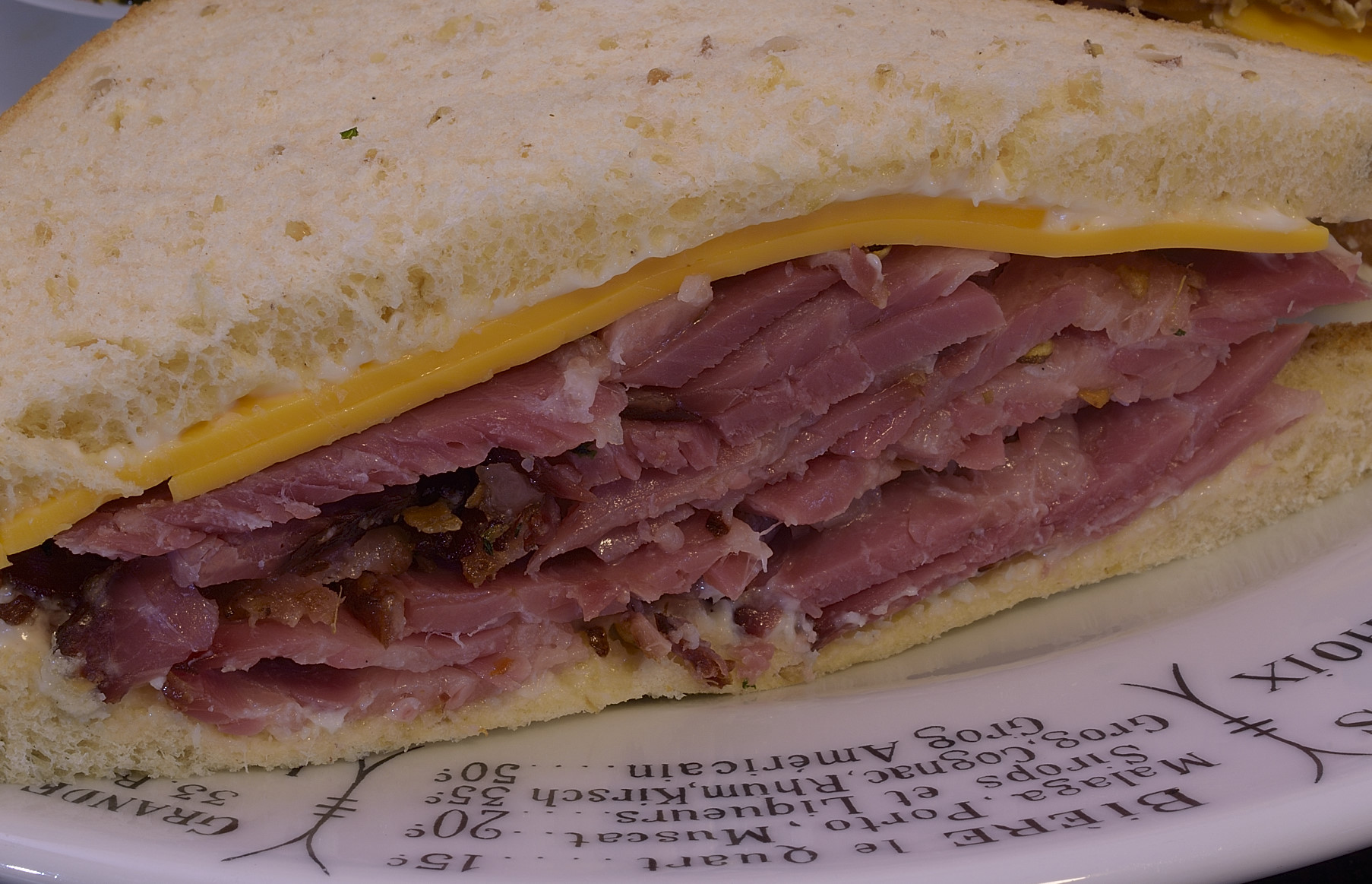
The classic deli sandwich.

While something with that Pacific Rim feel is uniquely appealing…still need more ideas? Tired of Reuben sandwiches already?
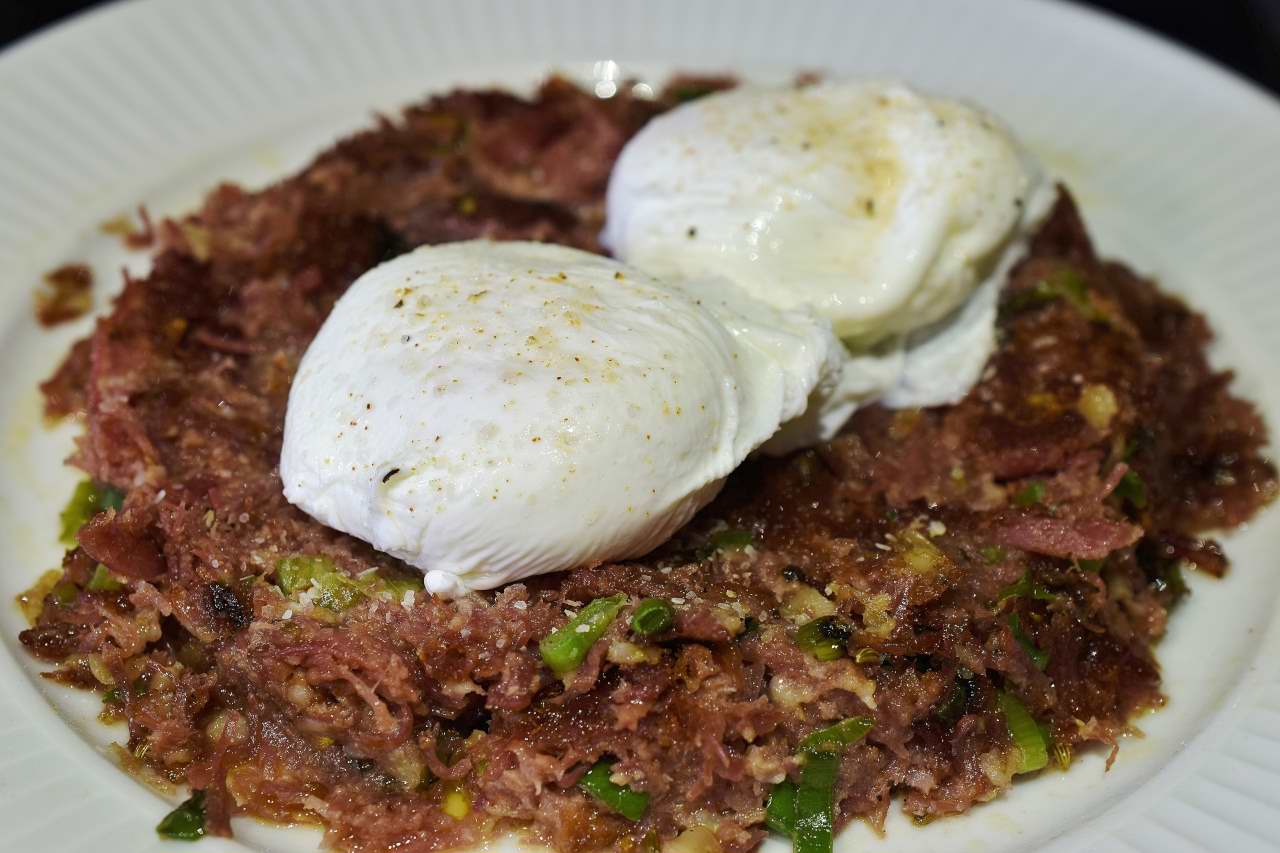
Pastrami hash–shredded and then mixed with a little bit of cooked oats and scallions–formed into a patty and grilled…a throwback to simpler times!

